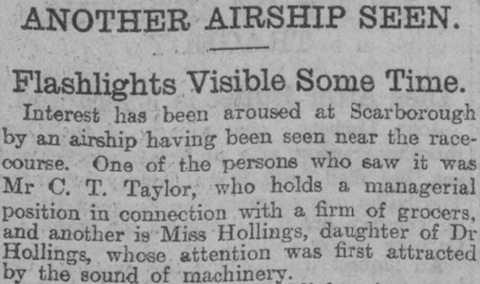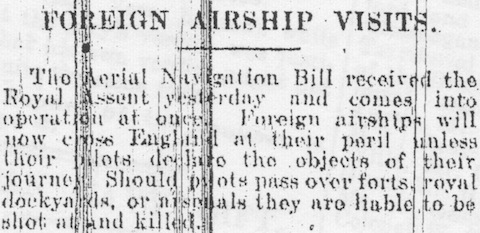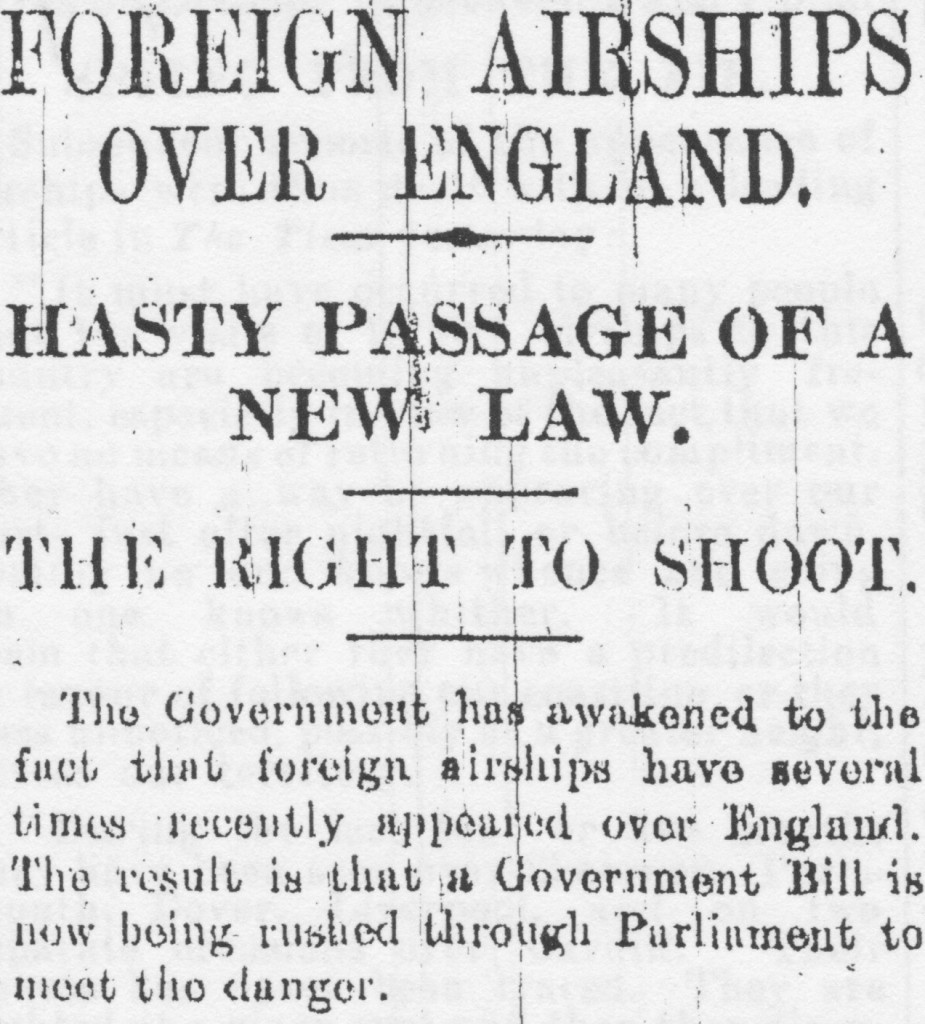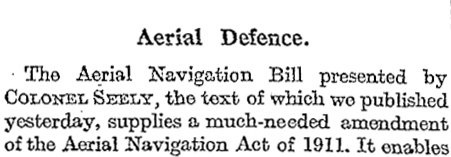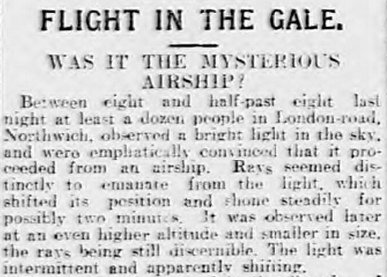Friday, 21 February 1913
The Liverpool Echo provides some additional information about the Scarborough airship reported yesterday (p. 4; above). It turns out that it was actually seen ‘either once or twice in the early part of the present month’ [February 1913], so why it has only come to light now is unclear. According to the Echo, Miss Hollings […]



